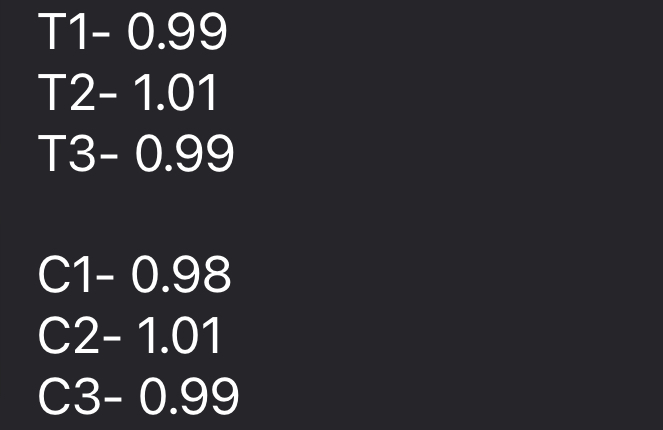End to Oxidative Stress
For the project, we have been doing an experiment on oxidative stress on different genes in the activated methyl cycle in Deinococcus radiodurans. The next genes were going to be Lux S and KAT A but we decided to only to do KAT A, as that would be the first line of defense against H2O2 exposure. If the D. rad was exposed to the H2O2, we would see an increase of expression of the gene KAT A.
First, we started with growing our cells. The cells were grown for 24 hours in TGY. Once they were done growing, we diluted the samples to an OD value of 1. This time around, it was decided to dilute the samples by tube rather than as a whole.1 OD600 +/- 0.2
These are the dilutions we ended up with for our samples. The samples were the exposed too H2O2. Instead of having the cells in TGY during the exposure process, we had T1-T3 in 200uL PBS + 200uL H2O2 and C1-C3 in 400uL PBS. The cells were the put in an incubator at 30 degrees Celsius. After incubation, the cells were put through a PBS wash and were frozen in the -80 degree Celsius. The pellet was frozen due to not being able to perform RNA isolation the same day as we were exposing. The next step was to do RNA isolation. We completed the same protocol we've been doing throughout the project. The results from RNA isolation via nano drop:
This isolation went significantly better than our last one. The volumes for sample C1 and C2 are low due to trying to read them on the fluorometer, that did not work. After getting our numbers, we then had to complete cDNA synthesis. We decided to go off our lowest concentrated sample, C1, and to input at least 1,111ng/uL into our cDNA synthesis. The next step was qPCR. For our template, we did 6uL of diluted cDNA, (45uL nuclease-free H2O/5uL cDNA sample) and 4uL of the respective master mix. The master mix we used were for the genes Sec A, Gap 3, and Cat A. The results from our PCR as it showed that there was no extra gene expression occurring.
Our next steps for this project is to brainstorm new possible oxidative stressors. We discussed UV among other things. When coming back from Spring break, we will have a more definitive idea.





Comments
Post a Comment